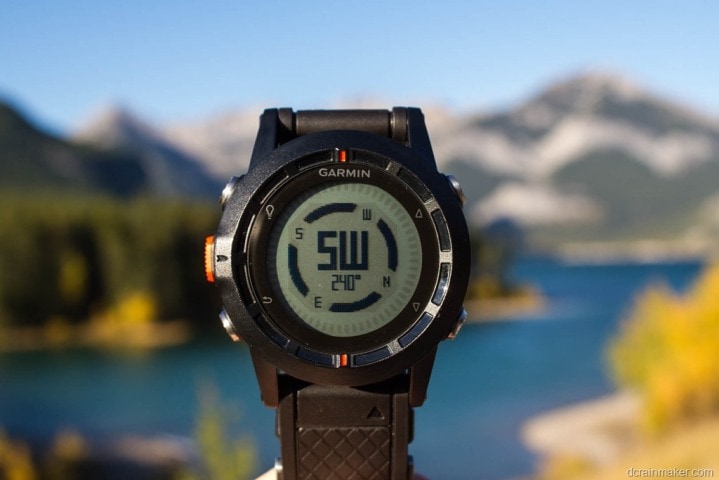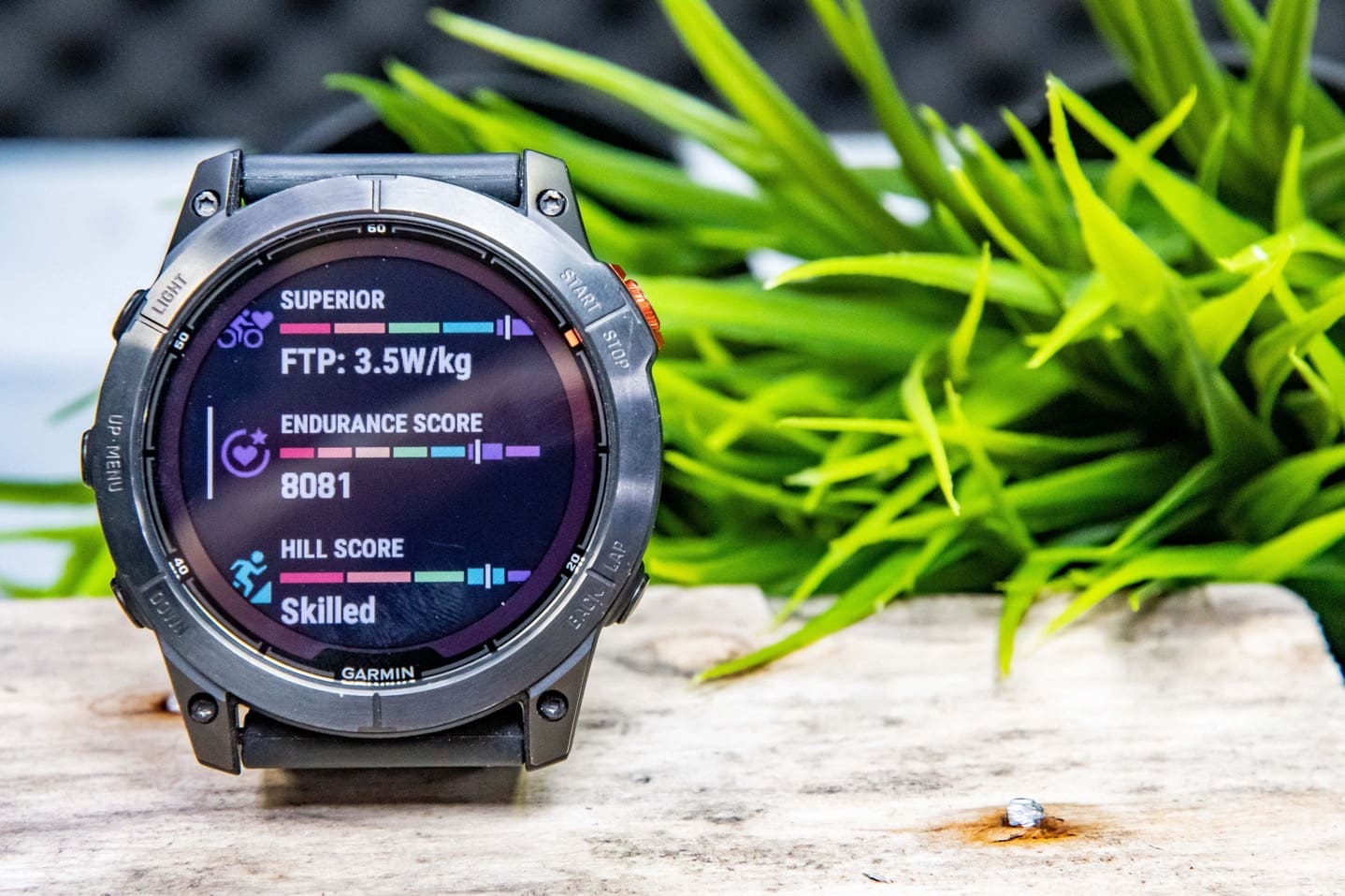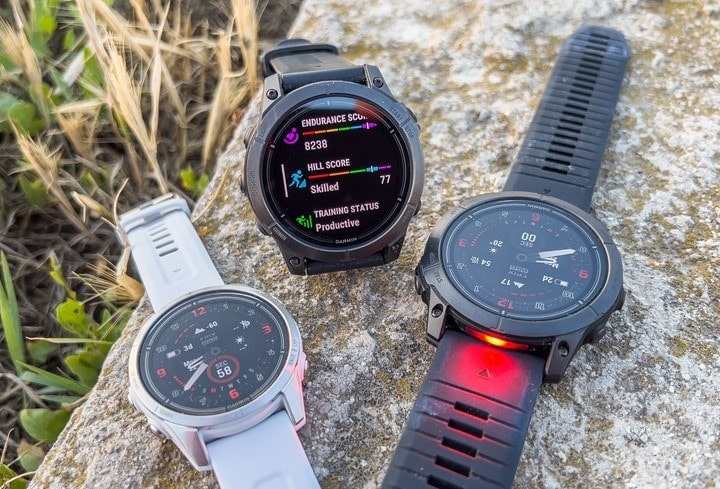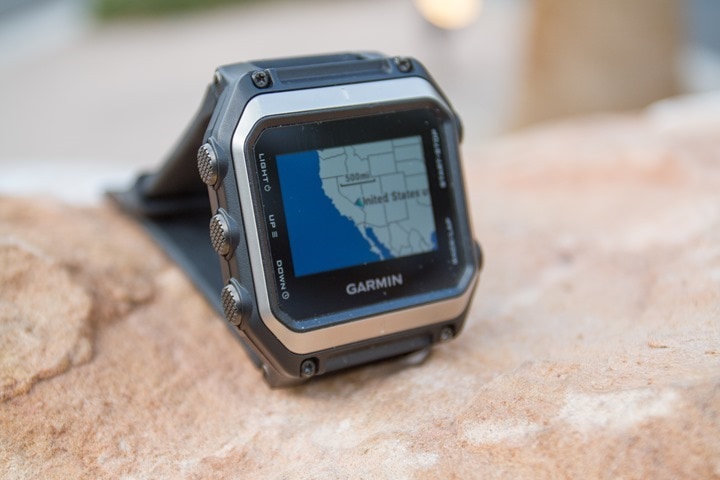
With all the sales of various sports tech products for the holiday period, there’s the inevitable question of whether or not new releases are around the corner. After all, companies offloading older inventory to make way for newer inventory is as much a part of Black Friday sales as trampling the doors of Kmart and Circuit City.
In particular, one product group seems to gather the most questions – so, I figured I’d quickly outline the history here, so people can make whatever informed purchasing decisions they want. As always, I’m not going to dive into future product plans and such, but rather just talk about what’s historically happened on both product releases and product sales. But still, I’ve got some fun questions to throw out there.
However, before that, there’s a single question that repeats itself over and over again in the comments section:
“When is Garmin going to release an AMOLED Fenix?”
Now, some of you are laughing right now, believing the answer to that is obvious. However, the fact that I and other major sports tech reviewers see this question posted numerous times *per day* illustrates the challenge that marketing Garmin currently has. The answer, in case you’re not a sports tech geek is simple: They already have – it’s called the Garmin Epix. It’s been out for two years, and is on it’s second iteration already (Stop, I hear you already, don’t you be talking about the true Epix OG yet, that’s a later-section).
Yes, the Garmin Epix is simply an AMOLED Fenix. They share the same software, same features, same everything. They’re kept in sync. There are zero feature differences between the two except battery life, display type, and one or two display-specific items (like Redshift).
The next question that follows almost right behind that is some form of:
“It’s been almost two years since Garmin released the Fenix 7, I don’t want to buy a new watch that’s gonna be replaced in a few weeks, when is the Fenix 8 coming out?”
And while that’s a true statement, it omits the fact that the Fenix 7 Pro came out 7 months ago, and is *the successor* to the Fenix 7. So to explain that, and what it means, let’s dig into things a bit.
A Quick Historical Tidbit:

The first thing to keep in mind is that the origins of the original Garmin Fenix some 11 years ago were from the ‘Outdoor’ division. At the time they focused almost entirely on hand-held devices. In fact, the original Fenix at launch was objectively not great as a fitness/sports watch, due to the menu system that came from the handheld devices (whereas Garmin’s Forerunner line came from their ‘Fitness’ division – which included cycling computers). One can read my old review on how I felt about that. It didn’t take long for that ship to turn though, but even today there are still slight remnants of that history.
Sidebar Distraction Time: I went back looking at some of my old e-mail threads with initial feedback to Garmin and responses to using the first Fenix. And wow, while I had remembered how difficult it was to use, I forgot about all the crazy steps for basic things that existed back then. Like starting/stopping/laps/etc, with no dedicated button for it. Here was the actual line-items in one of my older e-mail threads from a Garmin person on how to start an activity and lap:
Setup > System > Hold Keys > Hold Up > Start/Stop
Setup > System > Hold Keys > Hold Down > Lap (NOT implemented currently)As you can see, those were the early days!
In any case, these two divisions (Outdoors & Fitness) still exist today and still have separate product teams and even separated Wall Street reporting columnes on investor/financial statements. But nowadays operate much more closely in product planning than they used to.
In fact, over the last year, we’ve really seen Garmin take a ‘one-Garmin’ approach to new features – such as the quarterly update cycle (like last week). Of course, this doesn’t mean I (or you) always agree with which products get which features, or even why things can’t be released at the exact same second. But it does mean that things are generally within a few-week span, and someone at Garmin has at least talked to someone else about it. Stuff that simply didn’t happen a few years prior.
I think long-term I’d love to see Garmin finally consolidate into the Garmin equivalent of Apple’s WatchOS for their watches. Right now they’ve got a slate of different user interface (UI) styles/designs. Venu/Vivoactive has one, Forerunner another, Fenix UI, Epix UI, Instinct UI, and probably more I don’t even realize. Some of those make sense – like Instinct, which is designed to be ultra-low power from the ground up. But I struggle to see why Venu/Vivoactive/Forerunner are not identical UI’s, with individualized features per SKU. But again, a different thing for a different day.
Fenix Product Cycles:

The thing to understand about Garmin’s Fenix release cycles is that they have a tick-tock pattern to them. There’s a major release iteration, followed by a minor release iteration. The first few years, they were all major releases. But the jumps between each unit were less major than they are now. Note, that there was no Fenix 4. This is because the phonetic pronunciation combo of both ‘Fenix’ and ‘4’ together in Mandarin is basically translated as “fast rise to quick death” – not exactly the branding you want to aim for.
Here’s the full release table below*:
July 2012: Fenix
March 2014: Fenix 2
January 2015: Fenix 3 (didn’t ship till March 2015+)
February 2016: Fenix 3HR (the mid-point release, added optical HR, didn’t ship for months)
March 2017: Fenix 5
June 2018: Fenix 5 Plus (the mid-point release, added maps/music/payments to all units)
August 2019: Fenix 6 & Fenix 6 Pro
July 2020: Fenix 6 Solar (the mid-point release, all units got solar)
January 2022: Fenix 7 (plus Epix Gen 2)
May 31st 2023: Fenix 7 Pro (the mid-point release, plus Epix Pro)
The key takeaway from this list, is that it’s linear. Each new line is considered the ‘successor’. The only real exception to that is the Fenix 6 Solar released in July 2020, which was focused on just adding solar to all sizes. Also, it was still peak-COVID days, so the ability to execute some plans were dorked up.
I’d imagine Garmin will try and maintain the roughy 14-18ish month release cycle for Fenix. In fact, I’d imagine executives would love to pull it into a predictable 12-month release cycle if they could do it. Thus the earliest I’d expect to see a new Fenix 8 variant would be the late May/early June 2024 timeframe, with the other end of that being late-August 2024 (another popular release timeframe for the Outdoor product group).
Garmin would try hard to avoid sliding into September because that’s just a cluster of messiness for their own other products as well as competitors. They typically do things like the Venu/Vivoactive series then, and further try to compete for attention in the usual onslaught of Apple/Google/Fitbit releases, plus everyone else. This year that timeframe included new watches from COROS, Polar, Suunto, and then Samsung a bit earlier in August. I’m sure I’m forgetting someone else too.
Instead, the more interesting question here is what happens to Enduro. When original Enduro was first launched a few years ago in 2021, the watch originated as a cut-down Fenix 6X Pro Solar. They removed all the features people wanted, at the expense of battery life. As one might have expected – that didn’t end well. Sure, the battery was great, but the one feature ultra runners/hikers actually wanted (maps) was missing. Fast forward to the Enduro 2, and Garmin did the opposite. They took the base Fenix 7X and gave it a bigger battery. No feature removal – rather, extra features such as including an improved flashlight and new software updates at the time.
However, when the Fenix 7X Pro launched this past spring, it largely negated the need for the Enduro 2. The battery differences quickly evaporated the majority of the differences, with there being only a slight battery edge for the Enduro 2. Not to mention the Enduro 2 has the older ELEVATE V4 optical HR sensor package, so it lacks ECG & Skin/Wrist temperature features (or higher accuracy) of the new Fenix 7 Pro.
All of which is a long-winded ramp to the obvious question: Will Enduro stick around? It’s a brilliant brand name for the watch. And maybe the answer is simply: “Yup, Garmin will just take a Fenix 8X and stick another big-ass battery in there and call it Enduro 3. Case closed, brand confusion be damned.” Although admittedly, if there was a single scenario where there isn’t actually brand confusion – it’s the Enduro branding.
(*Note that back in the 2012-2017 range, Garmin was very much in the ‘announce now, release later’ camp. So the Fenix 3 announced Jan 2015, but didn’t start initially shipping till March 2015, and really didn’t hit it true availably for many more months. Garmin no longer does that, and essentially aims to announce with full stock availability.)
Epix Product Cycles:

For this part of the conversation, we’re gonna throw away the original Garmin Epix. Yes, there was one from way-back 8 years ago before Garmin abandoned it. It was Garmin’s first wearable with mapping on it. I actually don’t think it was ahead of its time technologically, rather, it was ahead of Garmin’s ability to execute it properly from a marketing standpoint. The poor thing, it got left behind faster than a Forerunner 645.
However, these days the Epix is arguably Garmin’s rising star for how to execute an AMOLED watch that can still be just as endurance-focused as a Fenix unit. In fact, we saw Garmin double-down on that with some Epix Pro units offering near comparable battery life to some models of Fenix 7 Pro.
Garmin said at the time this is partially because a Fenix MIP-based display + solar + touch layers, actually takes up more room than an AMOLED display that has the touch layer built-in. So Garmin simply filled that extra space with a bigger battery. Suunto mirrored these comments when talking about the Suunto Race (AMOLED) & Suunto Vertical (MIP), citing the depth of the MIP display connector is one factor that increases overall space.
In any case, more tangents and distractions aside, Garmin has kept the Fenix & Epix product launches linked. That wasn’t always a given though. In fact, they had originally planned on separating the launch dates for Fenix 7 Pro & Epix Pro months apart, but then pulled them together to the May 31st, 2023 launch earlier this year. A wise move.
January 18th, 2022: Epix Gen 2
May 31st 2023: Epix Pro (mid-point release, new HR sensor system, now three sizes, flashlight added)
Again, while we could rehash everything I talked about above in relation to Fenix timelines, I’d fully expect Garmin to keep Fenix & Epix timelines locked together. Especially as the company has really solidified the ‘this is one watch, simply pick your screen type’ mantra. Separating release schedules would only sow consumer confusion and doubt, and likely result in people holding back for fear the other unreleased sister product will be better somehow.
Thus, history would say a new release cycle would be no earlier than May 2024, and placed more during the summer timeframe. Unless Garmin manages to snap to an annual release cycle.
Which is a good time to point out that an annual release cycle, when done right, isn’t actually a bad thing. Apple’s done a very good job at managing that concept for their Apple Watch line. However, the absolutely critical part of that annual release cycle execution is that they push updates via the WatchOS platform to all watches from the last 4-5 years. That’s not what Garmin does today.
The goal of an annual release cycle is less about convincing people who bought last year’s version to upgrade. It’s it’s more about offering an ‘always-new’ option to people who have 2-4 year old devices. Give those people various hardware upgrades, and a few software features tied to said hardware upgrades, but otherwise, people all stay on roughly the same watch feature set. Of course, it can’t be left unsaid that Apple’s big advantage over Garmin here is that you *have* to have an iPhone with an Apple Watch. Thus, Apple effectively has you hooked on two concurrent purchasing/revenue cycles, let alone any added Apple services you buy from them.
But again, we’re getting distracted. Whether or not Garmin wants to end up with such a strategy is far more important than whether or not they could pull it off (technically or otherwise). The company has shown over the last year or so that they’re laying the software release cycle bricks for that, if they want to execute on it.
Oh – wait, one last thing. What will they call the next Epix? Technically the current names are: Epix (Gen 2), then Epix Pro (Gen 2). So, is the next one gonna be Epix 2 (Gen 3)? Epx 2? Or Epix 3? Or Epix 2 Pro? I’m sure some smart marketing person has an answer for that.
Going Forward:

(Yes, I just stuck an Epix Gen 1, the OG, picture for this ‘Going Forward’ section. I had to use it somewhere, and lacked a good place. This spot will do just fine, thank you.)
The whole reason I started writing this post was folks asking whether or not the Garmin Fenix/Epix holiday deals are good or not. The simple answer to that is: Yes, they’re good deals – and no, there’s probably not some weeks-away imminent Fenix or Epix unit.
This is partially because Garmin has historically always done $150-$200-off deals for their Fenix units each November/December, and partially because release cycle history also indicates we’re probably at least 6 months away from a new watch (at best). Garmin has never had a shipping Fenix release cycle of less than 12 months, with again, the average floating in the 14-18 month range.
The bigger question though in my mind, outside of what to do with Enduro, is whether or not Garmin will continue supporting new features on the Fenix 7/7Pro once a Fenix 8 arrives. When the Fenix 7 Pro was released this past spring, Garmin has since kept the older Fenix 7 & newer Fenix 7 Pro in sync feature-wise, with identical features across the board (save for the handful of things requiring the new sensor hardware, like ECG). At the time of launch, Garmin said they planned to keep those two in sync for a while, but stopped short of saying forever. And to be fair, forever is a long time.
However, while it’s everyone’s national pastime to give Garmin a hard time for dropping feature updates for older units, we are slowly seeing that tide shift. We saw it with the extraordinarily long time the Edge x30 series got feature updates, and we’re even seeing it now with the Forerunner 945 LTE still getting roughly feature parity with the FR955 and FR965 watches, despite being considerably older. Some of that may have to do with it being the only LTE offering, but I also wonder if Garmin is slowly trying to counter perceptions people have about the company and how it handles software updates. Of course, Garmin’s Venu 2/2 Plus updates are the oppsoite of that.
Only time will tell of course, and while I could go down a rabbit hole of comparing the feature upgrades Garmin does to their competitors, on the whole Garmin delivers far more features post-announcement than almost all of their competitors, even if some of their competitors (but not all) give updates for a longer period of time. I suppose one can argue the merits of both systems. But I refuse to have two rabbit hole posts in a single week.
So with that, thanks for reading!

0 Commentaires